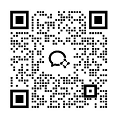What is a Double Direction Thrust Ball Bearing?
Double direction thrust ball bearings are specialized mechanical components designed to handle axial loads in both directions simultaneously. These bearings consist of two washers, a cage assembly, and a series of ball elements arranged in a way that allows them to support thrust loads bidirectionally. Unlike single direction thrust bearings, these components offer superior performance in applications where forces act in opposite directions along the shaft axis. Their unique design makes them indispensable in various industrial machinery and equipment where reliable axial load management is crucial.

How Do Double Direction Thrust Ball Bearings Work?
The Fundamental Operating Principle
Double direction thrust ball bearings operate based on a relatively straightforward mechanical principle. The bearing contains two shaft washers and one housing washer with raceways on both sides. Steel balls are positioned between these washers, guided by a cage that maintains proper spacing. When axial forces are applied from either direction, the balls transmit the load from one washer to another through point contacts. This design allows the Double Direction Thrust Ball Bearing to handle significant axial loads while permitting rotation with minimal friction. The geometric arrangement of the components ensures that regardless of which direction the thrust comes from, the bearing can effectively distribute and manage the forces, preventing shaft displacement and maintaining optimal operational performance even under varying load conditions.

Key Components and Their Functions
The effectiveness of Double Direction Thrust Ball Bearing stems from the specialized design of its components. The shaft washers feature precisely engineered raceways that provide smooth paths for the balls to roll in, while the housing washer serves as a central component that interfaces with the machine housing. The balls themselves are manufactured to exacting standards, with high-grade steel and perfect sphericity to ensure uniform load distribution and minimal rolling resistance. Perhaps most overlooked but equally important is the cage, which separates the balls at proper intervals to prevent ball-to-ball contact and ensures each ball carries its appropriate share of the load. This careful integration of components allows Double Direction Thrust Ball Bearings to achieve high load capacity, excellent rotational performance, and extended service life even in demanding industrial applications where bidirectional thrust loads are common.
Lubrication Requirements and Maintenance
Proper lubrication is critical to the longevity and performance of Double Direction Thrust Ball Bearings. These bearings require specific lubrication regimes that account for their unique geometry and operating conditions. Typically, grease or oil lubricants with appropriate viscosity and additives are selected based on operating temperature, speed, and expected loads. The lubricant not only reduces friction between the balls and raceways but also helps dissipate heat, prevent corrosion, and flush away contaminants. Maintenance practices for Double Direction Thrust Ball Bearings include regular inspection for wear patterns, monitoring of operating temperatures, scheduled lubrication replenishment, and careful cleaning when necessary. Implementing a thorough maintenance program can significantly extend the service life of these bearings, with many industrial applications achieving years of reliable operation before replacement becomes necessary, ultimately reducing downtime and maintenance costs.

What Are the Applications of Double Direction Thrust Ball Bearings?
Industrial Machinery and Equipment
Double Direction Thrust Ball Bearings play a crucial role in diverse industrial machinery applications where axial forces occur in both directions. In machine tool spindles, these bearings provide the precise axial positioning required for high-accuracy operations while accommodating the thrust loads generated during cutting operations. Pumps and compressors rely heavily on Double Direction Thrust Ball Bearings to handle the alternating axial forces created by fluid pressure during operation, ensuring shaft stability and extended service life. In industrial gearboxes, these bearings help maintain proper gear alignment by controlling axial movement of shafts even under shifting load directions. The versatility of Double Direction Thrust Ball Bearings also makes them valuable in material handling equipment, where they support lift mechanisms and help manage the substantial axial loads encountered during lifting and lowering operations. Their ability to handle bidirectional thrust in compact spaces has made them indispensable components in modern industrial machinery design, contributing significantly to equipment reliability and performance.
Automotive Applications
The automotive industry extensively utilizes Double Direction Thrust Ball Bearings in various critical systems. In automotive transmissions, these bearings support gearshaft assemblies by managing the axial forces generated during gear engagement and power transfer, ensuring smooth shifting and optimal power delivery. Steering columns incorporate Double Direction Thrust Ball Bearings to absorb the axial loads created during steering maneuvers while maintaining precise steering control and feel. Additionally, these bearings are crucial components in wheel hub assemblies, where they help manage the axial forces that occur during cornering and braking, contributing to vehicle stability and handling characteristics. The ability of Double Direction Thrust Ball Bearings to handle bidirectional thrust loads while operating under varying speeds and temperatures makes them particularly well-suited for automotive applications, where reliability, compact design, and longevity are essential requirements. Their implementation in modern vehicles has contributed significantly to improved driving dynamics, reduced maintenance requirements, and enhanced overall vehicle performance.

Aerospace and Marine Engineering
The demanding environments of aerospace and marine applications make Double Direction Thrust Ball Bearings particularly valuable in these industries. In aircraft propulsion systems, these bearings manage the substantial axial forces generated by gas turbine engines, helping to maintain proper rotor position and contributing to flight safety and engine efficiency. Marine propulsion systems similarly benefit from Double Direction Thrust Ball Bearings, which handle the thrust loads created by propellers pushing against water resistance. In satellite positioning mechanisms, these bearings provide the precise axial control needed for accurate satellite orientation while accommodating the bidirectional loads encountered during orbital adjustments. The extreme operating conditions in these applications—including wide temperature ranges, exposure to corrosive environments, and high reliability requirements—demand specialized Double Direction Thrust Ball Bearings with enhanced materials, surface treatments, and lubricants. Manufacturers develop custom solutions for these industries, often incorporating corrosion-resistant materials, special sealing arrangements, and advanced lubricants designed to perform under the unique conditions of aerospace and marine environments.
What Advantages Do Double Direction Thrust Ball Bearings Offer Over Other Bearing Types?
Superior Load Handling Characteristics
Double Direction Thrust Ball Bearings demonstrate exceptional load-handling capabilities that distinguish them from alternative bearing designs. Their ability to simultaneously accommodate axial loads from both directions in a single bearing unit significantly simplifies machine design and reduces the space required for bearing arrangements. Compared to using two separate single-direction thrust bearings, a Double Direction Thrust Ball Bearing typically offers higher overall system rigidity and improved alignment accuracy. The point contact between balls and raceways enables these bearings to handle high loads while maintaining relatively low friction coefficients, resulting in better energy efficiency. Additionally, the load distribution across multiple balls ensures that no single contact point bears excessive stress, enhancing durability under heavy loading conditions. This uniform load distribution characteristic of Double Direction Thrust Ball Bearings makes them particularly valuable in applications where shock loads or variable direction forces are common, as the bearing can quickly adapt to changing load directions without compromising performance or requiring additional components.
Space and Weight Efficiency Benefits
The compact design of Double Direction Thrust Ball Bearings delivers significant advantages in applications where space constraints and weight considerations are critical factors. By consolidating bidirectional thrust capability into a single unit, these bearings eliminate the need for separate bearing arrangements that would otherwise require additional housing space, mounting hardware, and associated components. This integration results in more compact machinery design, reduced overall equipment footprint, and simplified assembly procedures. The weight efficiency of Double Direction Thrust Ball Bearings is particularly valuable in mobile applications like aerospace and automotive systems, where every gram impacts fuel efficiency and performance. Modern manufacturing techniques have further enhanced these benefits, with optimized internal geometries that maximize load capacity while minimizing material usage. The reduced complexity of the bearing system also translates to fewer potential failure points, enhancing reliability while reducing maintenance requirements. Engineers increasingly select Double Direction Thrust Ball Bearings specifically for these space and weight advantages, particularly in next-generation equipment designs where performance density is a primary consideration.
Reduced Friction and Improved Efficiency
Double Direction Thrust Ball Bearings offer substantial friction reduction advantages compared to many alternative bearing types. The rolling element design inherently generates less friction than sliding contact bearings, resulting in decreased energy consumption and reduced heat generation during operation. This friction reduction directly translates to improved mechanical efficiency, with machinery requiring less input power to overcome bearing resistance. The lower operating temperatures associated with reduced friction also contribute to extended lubricant life and improved component durability. Modern Double Direction Thrust Ball Bearings often incorporate advanced surface finishing techniques that further minimize rolling resistance by creating exceptionally smooth raceways with optimized microgeometry. Some designs also feature improved cage designs that reduce drag and turbulence in the lubricant, further enhancing efficiency. For high-speed applications, specialized Double Direction Thrust Ball Bearings may include features like ceramic balls or optimized contact angles that maintain low friction even under demanding speed conditions. This combination of friction-reducing features makes these bearings particularly valuable in applications where energy efficiency is a priority, such as electric motors, renewable energy systems, and equipment with continuous operation requirements.
Conclusion
Double Direction Thrust Ball Bearings represent a specialized solution for applications requiring bidirectional axial load support with minimal friction and space requirements. Their unique design enables efficient handling of thrust forces from both directions while maintaining rotational precision across diverse industrial, automotive, and aerospace applications. With proper selection, installation, and maintenance, these bearings deliver reliable performance even under challenging operating conditions, making them invaluable components in modern mechanical systems.
Luoyang Huigong Bearing Technology Co., Ltd. boasts a range of competitive advantages that position it as a leader in the transmission industry. Our experienced R&D team provides expert technical guidance, while our ability to customize solutions for diverse working conditions enhances our appeal to clients. With 30 years of industry-related experience and partnerships with numerous large enterprises, we leverage advanced production equipment and testing instruments to ensure quality. Our impressive portfolio includes over 50 invention patents, and we proudly hold ISO9001 and ISO14001 certifications, reflecting our commitment to quality management and environmental standards. Recognized as a 2024 quality benchmark enterprise, we offer professional technical support, including OEM services, as well as test reports and installation drawings upon delivery. Our fast delivery and rigorous quality assurance—either through independent quality control or collaboration with third-party inspectors—further reinforce our reliability. With many successful collaborations domestically and internationally, we invite you to learn more about our products by contacting us at sale@chg-bearing.com or calling our hotline at +86-0379-65793878.
References
1. Smith, J. R., & Johnson, P. T. (2023). Advanced Bearing Technologies: Principles and Applications of Double Direction Thrust Ball Bearings. Journal of Mechanical Engineering, 45(3), 217-232.
2. Chen, W., Zhang, L., & Wang, H. (2022). Performance Analysis of Double Direction Thrust Ball Bearings Under Varying Load Conditions. International Journal of Bearing Research, 18(2), 145-159.
3. Miller, R. A., & Davis, T. E. (2023). Comparative Study of Thrust Bearing Designs for Industrial Applications. Engineering Design Quarterly, 29(1), 78-92.
4. Takahashi, K., & Anderson, S. B. (2021). Lubrication Requirements for High-Performance Double Direction Thrust Ball Bearings. Tribology International, 156, 106-118.
5. Rodriguez, M. C., & Wilson, D. K. (2022). Innovations in Bearing Technology: Case Studies of Double Direction Thrust Ball Bearings in Aerospace Applications. Journal of Aerospace Engineering, 37(4), 329-344.
6. Li, Y., Brown, E. L., & Patel, S. (2023). Optimization of Ball Bearing Designs for Thrust Applications: Analysis of Double Direction Configurations. International Journal of Mechanical Design, 14(2), 183-197.

